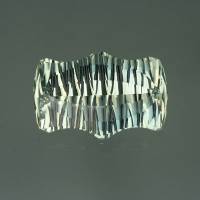

Citrine is the golden-yellow variety of macro-crystalline Quartz.Ĭitrine’s energy works well with its family – other macrocrystalline Quartz minerals. Lower grades of material can be cabbed, carved, and made into a great variety of beads and other ornamental objects. With a relatively high hardness of 7, the February birthstone is a fine facetable jewelry gem for all purposes. The macro-crystalline minerals form large well-shaped crystals that are often transparent, while the micro-crystalline only form microscopic crystals and are always opaque. Amethyst is crystalline quartz in colors ranging from pale lilac to deep reddish purple. The Quartz family has two main main groups, macr0-crystalline and micro-crystalline. Bio-energetic value: Prasiolite is a grounding stone yet as it is Amethyst which has been exposed to great heat it connects both the crown chakra and the heart. There are six main groups of silicate minerals, and these main groups are further subdivided into secondary subdivisions, such as Quartz and Feldspar. These tetrahedra connect with other chemical structures, in six different ways, to form a wide variety of minerals and rocks. Together, these two elements form a tetrahedra – a shape similar to a pyramid – with a silicon atom in the center and oxygen atoms at each of the three corners. Silicates are minerals which contain the elements silicon (a light gray shiny metal) and oxygen (a colorless gas). In addition to being a major part of the Earth’s crust, silicate minerals have also been found on the moon and in meteorites. Please note that Ballerina Jewelers is not liable for incorrect pricing on the website. Silicate minerals are the largest family of minerals, including more than 25% of all known minerals and 40% of all common minerals. The prices on the website may differ from the actual sale price. Prasiolite is a type of Quartz and a Silicate mineral. But in some cases it may also be a relatively accurate description from a scientific perspective. Prasiolite is sometimes sold as “Green Amethyst”, which may be seen as a marketing strategy since Amethyst is more well-known. In a few deposits, most notably in Montezuma, Brazil, it is possible to create a yellowish-green color because of some unknown variable.

In most deposits, the stones can only change from purple to yellow. All three of these crystals have iron impurities, the only difference is the heat level. By controlling the temperature, a low-grade Amethyst can be transformed into high grade Amethyst, Citrine or Prasiolite. As the quartz heats, trace impurities begin to alter on an atomic level, with ions gaining and losing electrons, and the result is a change in color. Heat-treatments mimic natural processes, by heating the quartz to a high temperature much as might happen if the Quartz was near a geothermal source. Heat-treatments are common for Amethyst, Citrine, Prasiolite and Smoky Quartz.


 0 kommentar(er)
0 kommentar(er)
